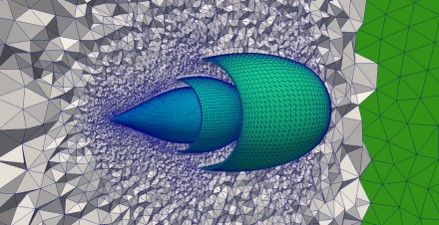Main Page
Contents
Extreme-Scale Parallel Mesh Generation
Overview
Finite Element Mesh Generation is a critical component for many (bio-) engineering and science applications. The goal of this project is to deliver a novel framework for highly scalable and energy efficient that optimizes specific error-metric mesh generation for the Finite Element (FE) analysis in three and four dimensions. Domain-and application-specific knowledge and run-time system support are combined to improve accuracy of FE computations, energy efficiency and scalability of parallel FE mesh generation codes. The proposed approach is to abstract and expose parallel mesh generation run-time information to the underlying run-time system which can guide the execution towards the most efficient utilization of resources for given supercomputer.
We have assembled a team of established leaders that are currently developing state-of-the-art work that represents issues relevant to NASA’s CFD 2030 Vision and will broadly impact end-user productivity of users throughout DoD and NASA.
This project will focus on the following objectives:
- Design a multi-layered algorithmic and software framework for 3D tetrahedral anisotropic parallel mesh generation methods using state-of-the-art functionality supported by methods implemented in AFLR and CRTC’s telescopic approach for parallel mesh generation.
- Development of error-based metrics to drive an anisotropic adaptive process
- Design a power-aware parallel runtime software system for extreme-scale adaptive CFD computations including: (i) mesh generation & adaptation, and (ii) consistent error-based metrics for adaptation of any CFD discretization with localizable error estimates.
Extreme-Scale Parallel Mesh Generation will have a significant and broader impact on research and education.

